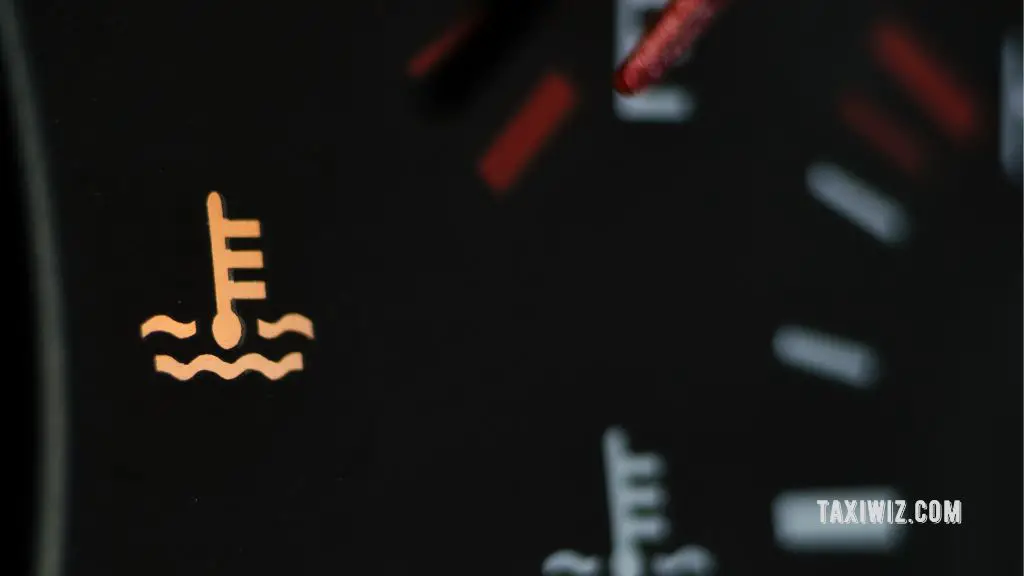Why Do I Hear Water in My Car? Reasons, Causes & Fixes!
The sloshing sound in the vehicle can sound alarm bells for any driver. If you’ve faced this, it’s normal to think, why do I hear water in my car?
The most plausible reason is that it’s happening due to a jammed-up drain. This causes the condensed water being trapped in the heating and cooling system, then spilling to the ground.
However, it might also be a different issue. It really depends on the position in which you hear the sound.
The solution will vary accordingly. Although most causes of this problem can be solved quickly, you might need the help of a mechanic.
Below are the internal and external reasons you may be hearing water in your car, with suggested solutions.
Why Do I Hear Water In My Car?

Although “sloshing” is usually the word used to describe the sound, it has also been called a clicking or gurgling noise.
Whatever you want to call it, chances are high that the cause of the problem is a blocked drain. Majority of the cars have multiple drain holes. And if they get clogged up, soon they can start collecting waters, which can be harmful for the vehicle.
Some other signs to look out for to determine whether there’s a drain leakage in your car are:
- Water on the floor: If you see water on your car’s floor, particularly near the front passenger seat, your AC drain might be clogged. This leads to the water overflowing into the cabin.
- Moldy smell: When an AC drain is clogged, it leads to moisture build-up in the system, which results in a moldy or musty smell inside the car.
- Reduced cooling performance: Inadequate or faulty drainage can lead to the freezing of the evaporator. This will result in the AC air output not being as cold as it’s supposed to be.
If you’re not sure whether it’s a drainage issue, it might be one of the following reasons:
Internal Reasons for Water Sloshing Sound in Car
You might be hearing a sloshing sound inside your car due to an internal issue, which might be any of the following:
- A Blown Head Gasket
Your head gasket is blown if the connection between the main part of the engine and the top section is damaged.
The function of the head gasket is to seal the areas where coolant flows, besides other parts within the engine. When the head gasket fails, the seal is lost, which results in oil or coolant leaks, or gasses escaping from where fuel burns in the engine.
Fixing this will require a sealant. However, note that sealants are a suitable fix only for minor leaks (which usually manifest in antifreeze loss and overheating).
In the case of a larger leak, we recommend getting it replaced by an expert.
- Low Coolant

Has your car’s antifreeze light been flashing? Then you might be dealing with a case of low coolant, which can also lead to a sloshing sound. You’re most likely to hear it from under your dashboard when the engine is on.
If you think this might be the culprit, start by checking the amount of coolant in your car.
Next, pour coolant into the reservoir until the recommended level. If you notice the coolant level dropping even after a few weeks of driving, you might be dealing with a cooling system leak.
- A Faulty Heater Core
If there’s an issue with your heater core, it can easily lead to a noisy engine. When you start your car’s engine, this can then lead to a liquid sound emanating from your car’s radiator.
This happens because of air bubbles inside the coolant, which are forced to the top with trapped air.
When the car is started, these bubbles, along with any trapped air, are forced toward the top of the fluid. The combined mixture is then expelled by the action of the engine. A noise is then created by these air bubbles.
If this noise doesn’t go away even after the vehicle’s ignition, or if you notice symptoms such as water droplets or puddles underneath your car after driving, it could indicate a potential problem with your heater core.
The heater core is quite an essential part of your car, so it’s not recommended to try to fix it yourself. Reach out to a professional.
Unfortunately, it’s hard to predict how much you might have to end up spending because it depends on the specific issue.
External Reasons for Water Sloshing Sound in Car
If you can’t chalk the sloshing sound up to any of the reasons listed above, it might be one of the following external reasons:
- An Obstructed Windshield Drain
Your car’s windshield has a “cowl”, which sits at the base of the windshield. When too much water builds up inside the cowl, this can cause drainage within the car. One sign of this is a rusty floorboard.
You’ll probably need to detach the plastic panel located beneath the windshield to reach the upper portion of the drains.
You can then clear the drains using high-pressure air, a flexible cable, and a flushing water hose. However, since this is relatively difficult to do by oneself, it’s better to have a professional mechanic perform this task.
Additionally, it is recommended that you regularly clean the base of the windshield to prevent debris from entering the gutter below.
- Deteriorating Sunroof Drain
As you know, there are multiple drain holes in a car, starting from the sunroof and the trunk to the door and windshield.
Over time, these drain holes can accumulate dirt and debris. One of the drainage points most likely to sustain damage from this is the sunroof’s rubber gasket.
This condition can result in water seeping into your car when it is washed, or when it rains.
The trapped water in the drain holes may not drain out completely, which then leads to water sloshing inside the car.
If left unchecked for too long, this can result in liquid leaks on the headliner, eventually resulting in water dripping into the car’s interior and staining the ceiling.
The most efficient and prompt solution is to replace the drain with a new one. As this can be done inexpensively, and by yourself, you should periodically replace it to prevent further unforeseen damages.
- Clogged AC Drain
When you use the air conditioner in your car, condensation forms on the evaporator coil, creating moisture that drips into a drain pan located underneath the car. This process can sometimes result in a sloshing sound.
However, issues can arise if the condensate drain becomes blocked or clogged. Stagnant water in the pan may overflow onto the floor of the car, which creates ideal conditions for mold to grow.
You may also notice water sloshing behind the dashboard when braking or turning.
There are a couple of methods you can try to unclog the condensate drain. You can try using compressed air; find the evaporator drain tube beneath your car and blow compressed air into the tube opening to remove any obstructions.
If compressed air isn’t available, I got a solution for you. Get a flexible wire. It should be thin and sturdy.
Now, insert it into the tube hole and wiggle a bit to unclog the drain. Remember to wear gloves and safety glasses, as dirty and moldy water might leak out when applying compressed air.
In addition to clearing the clog, you can also thoroughly shake the drain to get rid of any built-up debris.
- Water Trapped in Side Steps
It’s possible for moisture to get trapped in the side steps of your car if you’ve been through a rainstorm or recently driven through a flooded area.
This can lead to a backflow of water into other internal components. This can then result in costly repairs for electrical systems, such as the car door sensor.
Fortunately, addressing this issue is relatively straightforward. Using a compressor or blower, you can usually effectively eliminate any standing water. Alternatively, using a large-capacity fan might also help.
Frequently asked questions (FAQs)
Is sloshing sound in car bad?
Though it’s not something that requires you to stop the car and address it immediately, but it certainly needs to be dealt with.
By following our guide, you can find the exact problem, and once you’ve resolved the issue, then there’s nothing to worry about.
Where are car door drains located?
They are located under the door panel. If these small holes get clogged, they won’t be able to drain the water properly and might cause damage to your indoor.
In some cases, your car might smell as well. So, it’s important to ensure they remain unclogged.
Why do I hear water when I accelerate?
The water sound you’re hearing is essentially the engine coolant moving through the heater core. Sometimes, it can cause trapped air bubbles within the cooling system and produce water-like sounds.
Though there’s no immediate risk, it can cause issues in coolant circulation in the future.
Final Words
There are multiple possible reasons like clogged drain, low coolant or faulty heater core that can cause you to hear water moving around inside your car.
If you’re not sure whether it’s one of the reasons mentioned in this article, it’s best to enlist the help of a professional.

